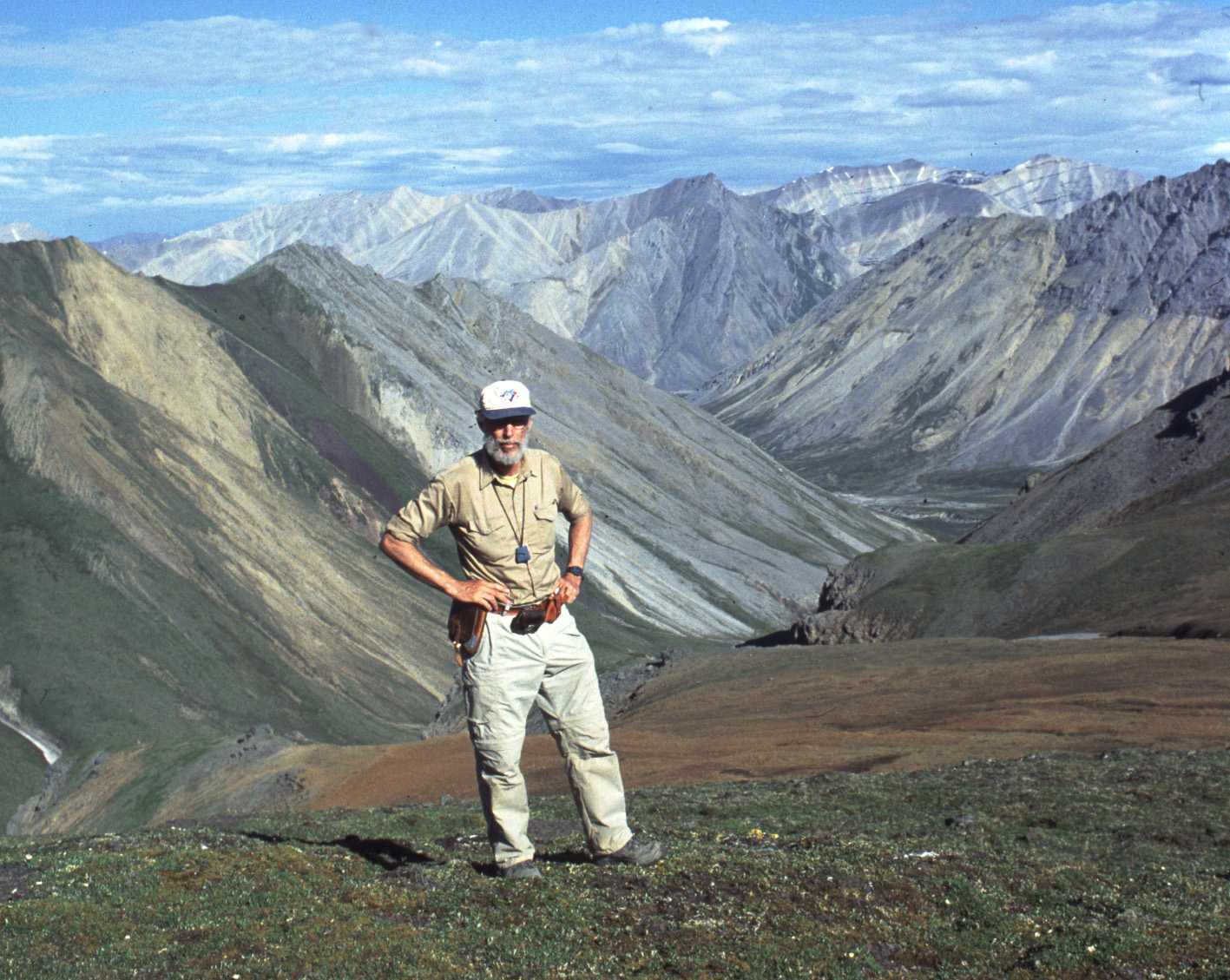Dr. Paul Hoffman received the Kyoto Prize for proving the snowball Earth hypothesis

Photo courtesy of Gabrielle Walker and Sasha Turchyn.
In June 2024, Dr. Paul Hoffman, Adjunct Professor in UVic’s School of Earth and Ocean Sciences and Professor Emeritus at Harvard University, was awarded the Kyoto Prize in Basic Sciences for proving the snowball Earth hypothesis and other major contributions to geological research.
The Kyoto Prize was founded in 1984 by Kazuo Inamori and is awarded annually in three categories: Advanced Technology, Basic Sciences, and Arts and Philosophy.
Early in his career, Hoffman worked with the Geological Survey of Canada studying Plate Tectonics in Arctic Canada. It was not until Hoffman arrived at UVic in the 1990s that he began the project in Africa that would eventually lead him to prove the snowball Earth hypothesis.
The snowball Earth hypothesis, first proposed by Joe Kirschvink at CalTech, suggests for long periods of history, Earth was covered in sheets of ice from pole to pole. The hypothesis suggested that the snowball Earth period would have been the “coldest global climate imaginable,” with a global mean temperature of approximately -50°C. Snowball Earth was theorized to have been deposed by major global climate changes. The last snowball Earth is said to have ended approximately 635 million years ago.
The hypothesis’ name is derived from a 1992 paper by Kirschvink, where he mused that this event would cause the earth to resemble a “highly reflective snowball.”
Hoffman has spent 30 years conducting geological field research in northern Namibia, where he studied snowball Earth. He began the research while at UVic in the mid-1990s, and pursued it throughout his 14 year term as the Sturgis Hooper Professor of Geology at Harvard University.
“I was coming from northern Canada, I’d never worked in a field area where people were living, where there were roads, where there was darkness at night, and where there was no drinking water everywhere,” Hoffman explained in an interview with the Martlet. “So it [was] a completely new experience for me.”
Namibia was an ideal location to conduct geological research, Hoffman explained. Geologists tend to work in deserts, as they prefer “rocks without vegetation.” According to the World Bank’s Climate Change Knowledge Portal, 92% of Namibia’s land is categorized as semi-arid, arid, or very-arid. “I spent 30 years doing field work there and I mapped one third of one belt,” he said. “It shows you how rich the geology is there.”
When he initially arrived in Namibia, Hoffman had not yet begun to study snowball Earth. “It was known in the literature that there were glacial deposits associated with carbonates, and sure enough there really are glacial deposits,” Hoffman said. “The question then became, ‘Is it possible that there are big stratigraphic gaps between the carbonate and the glacial deposits, during which time the latitude could’ve changed dramatically?’”
After a few years, the data began to show potential evidence of a snowball Earth. “It became very clear that you could actually see the sea level fall leading into the [first] ice age, and then the sea level rise when the ice melted down again back into carbonate,” Hoffman said. “So there was no question that the glaciers were descending to sea level in an area where there were no mountains. … It was an ice sheet that developed pretty much at sea level.”
Unsure what to make of it, Hoffman recalled the snowball Earth theory proposed by Kirschvink several years earlier. He said he was drawn to the hypothesis because of its testability.
“I knew it was testable in the geologic record because it makes very strong predictions. It predicts that the glaciation should begin and end synchronously all over the world, that the duration of the glacial period should be extremely long, tens of millions of years, and you should have this torrid aftermath, and all of these predictions have turned out to be true,” Hoffman explained.
Snowball Earth was initially rejected by many scientists, and even Hoffman was skeptical at first. Many considered it implausible that the Earth returned to warmer conditions after being fully frozen.
“Initially, a lot of [the] adverse reaction was because people didn’t understand the hypothesis well enough, including me, to be able to explain why the geology was consistent with the hypothesis rather than being against it.”
“The biggest problem with the snowball Earth hypothesis early on was the hypothesis itself,” Hoffman said. “Really, it wasn’t well enough understood what a snowball earth would be like and how it would operate … so a geologist didn’t know whether any given observation they had made was either for or against the hypothesis, because the hypothesis wasn’t fleshed out.”
Despite this, Hoffman continued his research. Today, snowball Earth is broadly accepted by the scientific community, and Hoffman has begun studying its biological response to consider how — and what — life survived. “All life that we have today descended from the survivors of snowball earth,” Hoffman said.
Recently, Hoffman has also been working on a textbook about snowball Earth, which is currently out for chapter review and is slated to be submitted in final form in late September.
“For me, 2024 will also be remembered as the year I finished a snowball Earth textbook in which I lay out the story of how I think the biosphere responded to these events and, of course, the nature of the events themselves as we currently understand them.”








